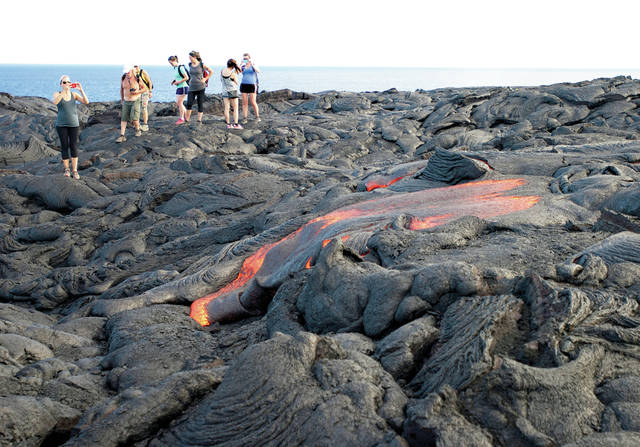HONOLULU — Hawaii residents and an organization representing federal workers sued the Federal Aviation Administration Wednesday to force it to do something about tour helicopters buzzing their communities and national parks around the U.S. ADVERTISING HONOLULU — Hawaii residents and
HONOLULU — Hawaii residents and an organization representing federal workers sued the Federal Aviation Administration Wednesday to force it to do something about tour helicopters buzzing their communities and national parks around the U.S.
The lawsuit filed by Public Employees for Environmental Responsibility and Hawaii Island Coalition Malama Pono asks the court to order the FAA to draft either air tour plans or voluntary agreements governing air tours for seven parks within two years.
Bob Ernst lives along the flight path of helicopters taking tourists to see lava inside Hawaii Volcanoes National Park. The rancher and farmer said the helicopter noise starts before he eats breakfasts and lasts all day.
“It’s really nerve-rattling. It’s offensive. It makes your life miserable,” said Ernst, who is a founding board member of Hawaii Island Coalition Malama Pono.
FAA spokesman Ian Gregor said the agency doesn’t comment on pending litigation.
The lawsuit said the National Park Air Tour Management Act of 2000 requires the FAA to prepare an air tour plan, or develop voluntary agreements with air tour operators, whenever someone applies for permission to conduct a commercial air tour over park. A 2012 law created an exemption for parks with fewer than 50 flights per year.
But the complaint, filed in U.S. District Court in Washington, D.C, said the FAA hasn’t created plans for any park since the law was passed 17 years ago. It’s reached agreements for air tour companies to voluntarily follow rules at two parks.
Hawaii Volcanoes National Park recorded 15,489 air tour flights in 2016.
Surveys found helicopter noise was audible in 98 percent of the wilderness areas of the park, said the park’s superintendent, Cindy Orlando. Many flights traverse nesting areas for endangered native birds like the nene, or Hawaiian goose, and io, or Hawaiian hawk.
The flights disrupt hula performers who come to the edge of Kilauea volcano’s summit crater to chant, dance and make offerings. They disturb Native Hawaiians, who in following traditional protocol ask permission when they enter the forest. The sounds of silence are considered a positive response to such a request; helicopter noise is interpreted as disapproval.
“There basically isn’t a single location in the park where a visitor can go and be guaranteed of hearing only natural sounds,” said Orlando, who is not part of the lawsuit.
Orlando said the Park Service doesn’t comment on pending legislation. But she said her agency’s long-held position is that it wants an air tour management plan.
Author and wildlife filmmaker Doug Peacock said flights have become more frequent at Glacier National Park in Montana over time.
He recalls flights overhead when he filming grizzlies in the park’s backcountry in the early 1980s. Flight operators increasingly cater to tourists during the park’s busy summer season, said Peacock, who is from Emigrant, Montana.
“There ought to be a few places in the world where you indeed can measure some silence in your own life, as it used to be everywhere,” said Peacock, who is not part of the lawsuit. “The interior of a large chunk of public lands, a national park, is your best shot at it. It’s rendered impossible by the noise of a single helicopter.”
In addition to Hawaii Volcanoes and Glacier, the plaintiffs are seeking air tour management plans or voluntary agreements for the following five parks: Haleakala National Park in Hawaii; Lake Mead National Recreation Area in Arizona and Nevada, Muir Woods National Monument in California, Great Smoky Mountains National Park in Tennessee and Bryce Canyon National Park in Utah.
Jeff Ruch, executive director of PEER, said the lawsuit could be a template for other parks not part of complaint. The lawsuit said there are 26 parks with more than 50 overflights a year.



